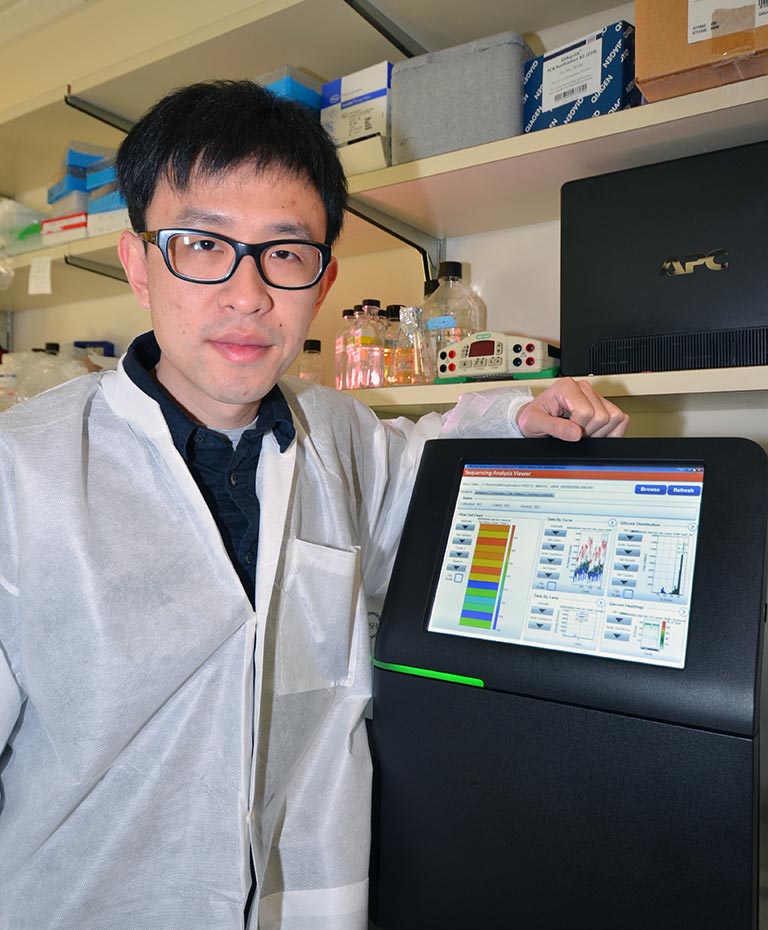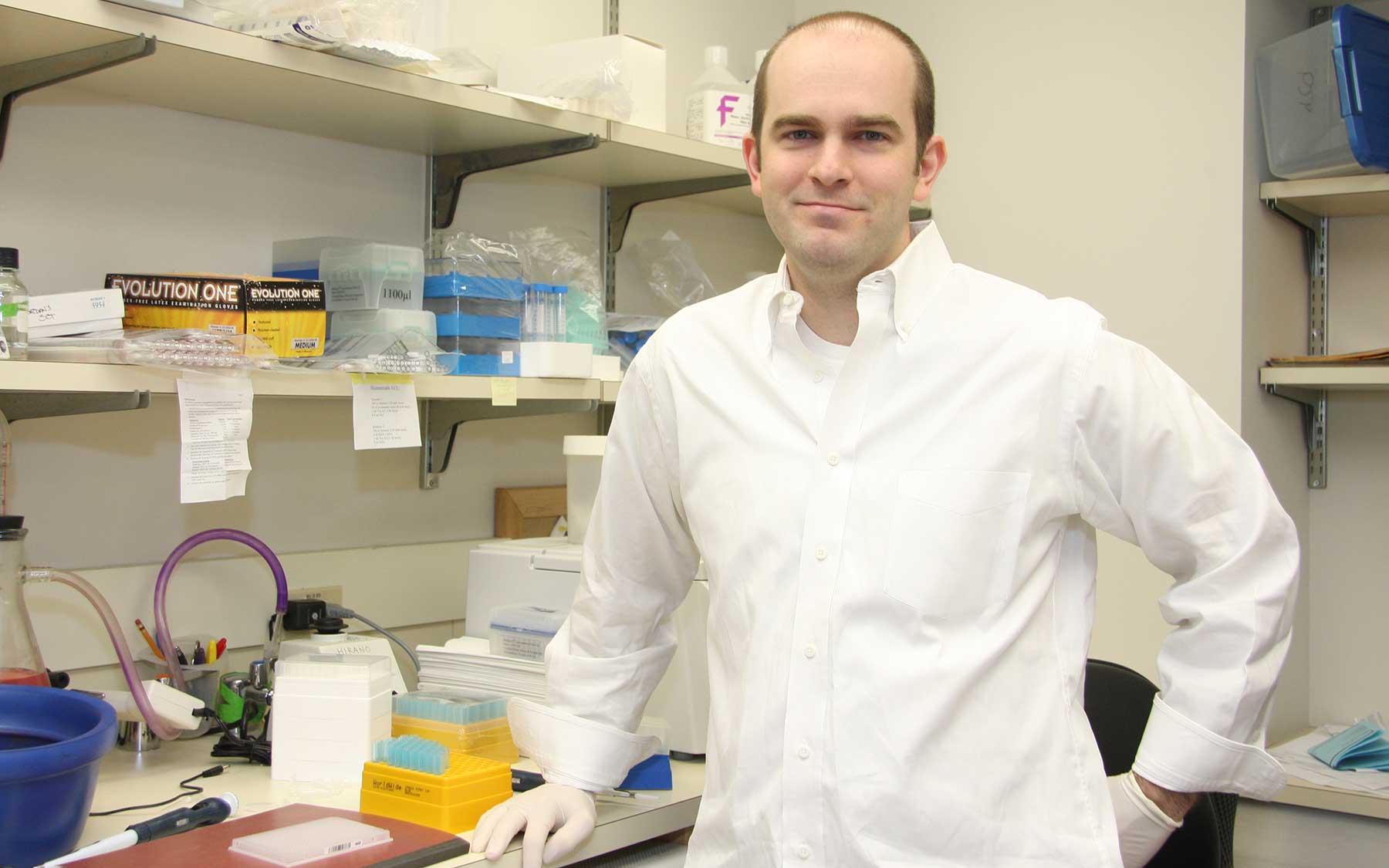Childhood cancer is rare, and that categorization can dissuade researchers from studying. But to CSHL’s Chris Vakoc, a cancer researcher who also trained as a medical doctor, the rarity of childhood cancer is not what’s really important.
Childhood cancer is rare, compared to adult cancer—and overall, that’s a very good thing. But calling it rare can actually hurt the chances of finding new treatments for those unlucky children who do get cancer.“Scientists—we’re always trying to justify the significance of what we’re doing,” says Associate Professor Chris Vakoc, M.D., Ph.D., a cancer researcher at CSHL. “It’s commonly accepted that when introducing a cancer you’re studying, you’re going to talk about the gravity and enormity of it.” He has seen that tradition lead many cancer biologists to choose common cancers as the focus of their research—a category that wholly excludes childhood cancers.
Even acute myeloid leukemia (AML), one of the more common childhood cancers and a research focus in Vakoc’s lab, is still quite rare. The American Cancer Society estimates that 19,950 people, of which only a small fraction are children, will be diagnosed with some form of AML in 2016. For comparison, nearly a quarter million women are expected to be diagnosed with breast cancer in the same time period. To make the American Cancer Society’s list of “common cancers,” the estimated annual incidence for 2016 had to be at least 40,000 cases.

At the level of basic science, certainly, a cancer’s prevalence doesn’t necessarily make it more of a priority. “There’s a great tradition in science of studying rare abnormalities in patients, learning something really fundamental, and having it have significance to more common diseases,” Vakoc explains. He points to a revolutionary genome editing tool called CRISPR as a related example. Basic scientists discovered CRISPR while studying the immune system of bacteria, and have uncovered a tool of profound biomedical significance. Few people, if any, would place bacterial immune mechanisms at the top of their priority research list.
Vakoc and his team are using CRISPR extensively in their cancer research. As Vakoc put it in a recent story in the Harbor Transcript (pdf), with this tool they can, “map every active surface of every protein that every cancer requires,” allowing them to find “surface features on them that we want drugs to hit in order to have dramatic killing effects.” In this way, they’ve been able to discover many new genes and pathways that could have relevance beyond AML, the rare cancer they are studying. Vakoc says the technique can be applied across all cancer types to find strong, as yet unnoticed drug targets.
Vakoc will give a talk on this incredibly exciting new approach at the upcoming CAC2 research conference at CSHL, as part of a lineup that includes clinicians, National Cancer Institute representatives, and other cutting-edge investigators. But what makes this conference truly unique is that it also includes foundations that provide support for cancer research. A major aim of the meeting is to unite the cancer community and foster new conversations, breaking away from the “categorical separation” between groups that Vakoc has experienced.
“This is totally different. I’m used to conferences where most of the attendees are scientists—scientists talking to scientists,” says Vakoc. “I think everyone stands to benefit from the upcoming CAC2 meeting by enabling the resources that each foundation commands to have the maximum amount of impact.”
Investing more resources in researching the relatively uncharted territory of rare cancers may be one way to maximize impact. These are opportunities where you might learn something so fundamental that it transcends the “rare” cancer in which it was discovered.
These are all reasons that the rarity of childhood cancer should not dissuade researchers from studying it. But above all, as a medical doctor who has worked with pediatric cancer patients and stresses how precious each of their lives is, Vakoc says that “you can’t put numbers on this.”
